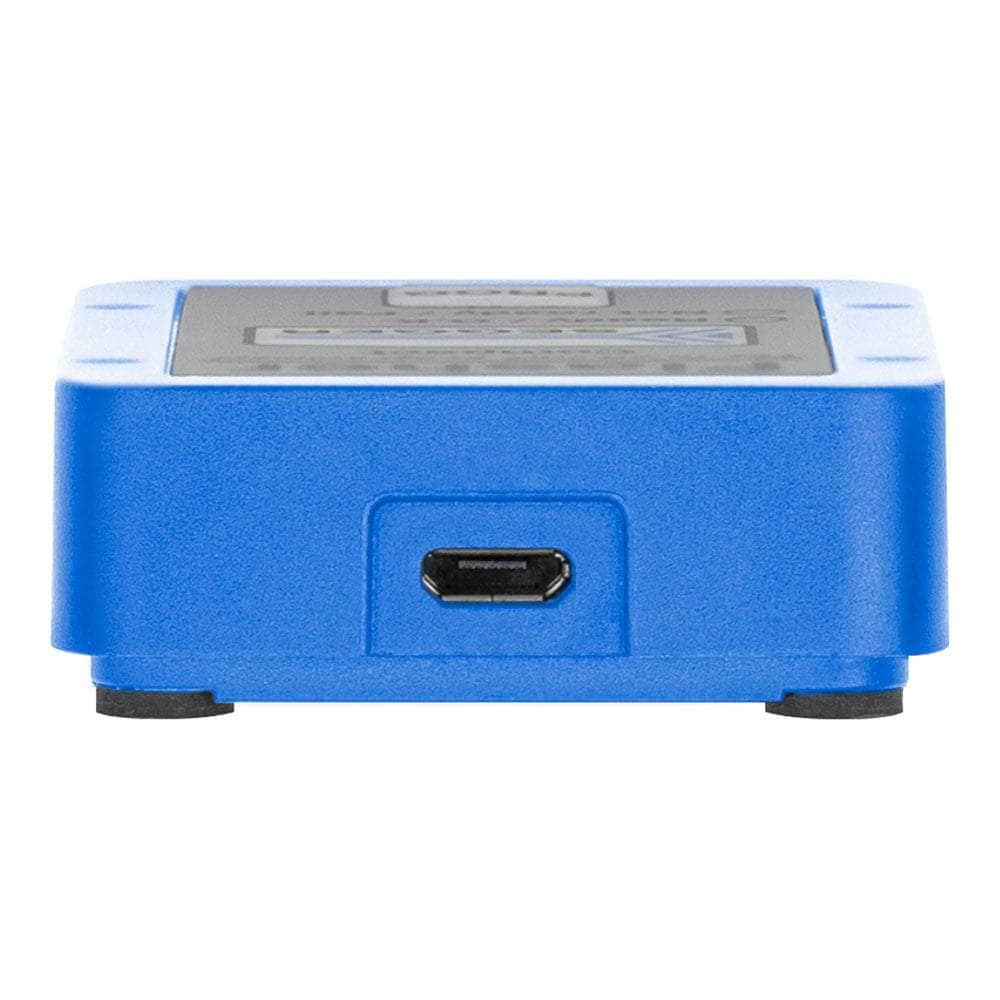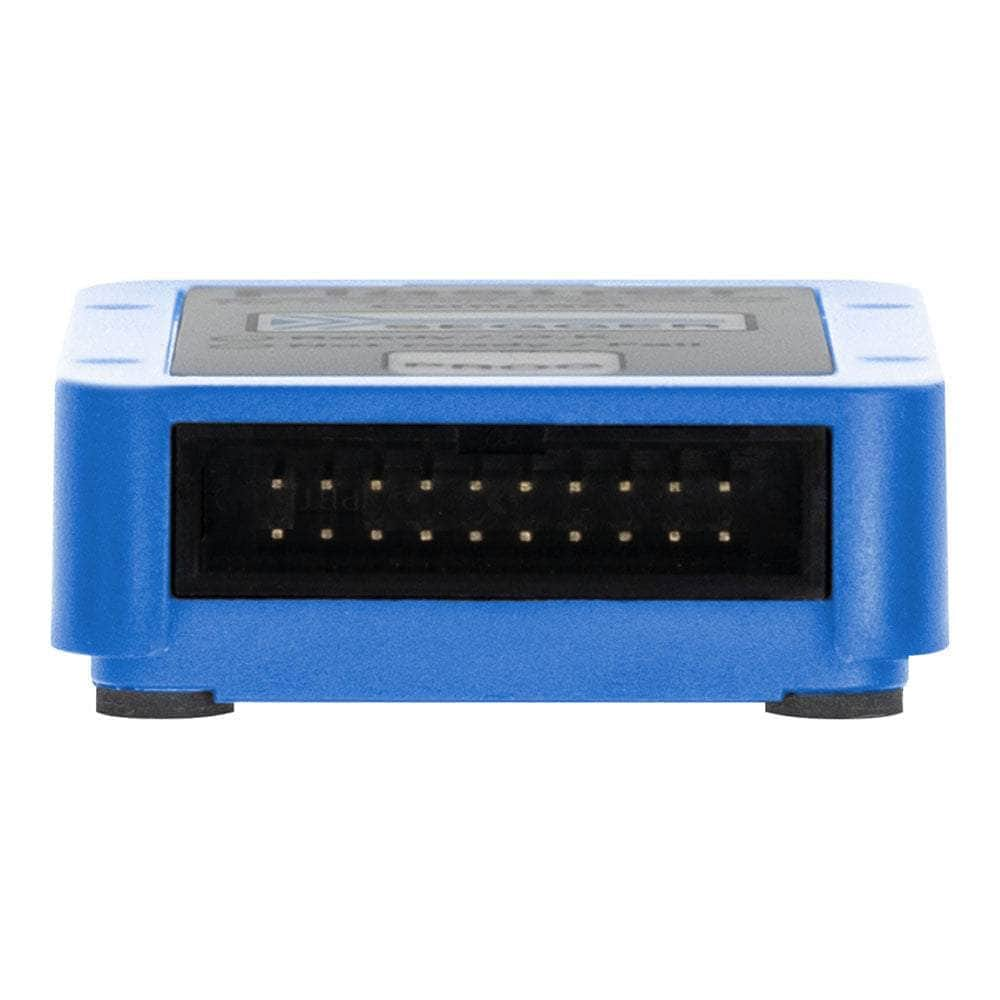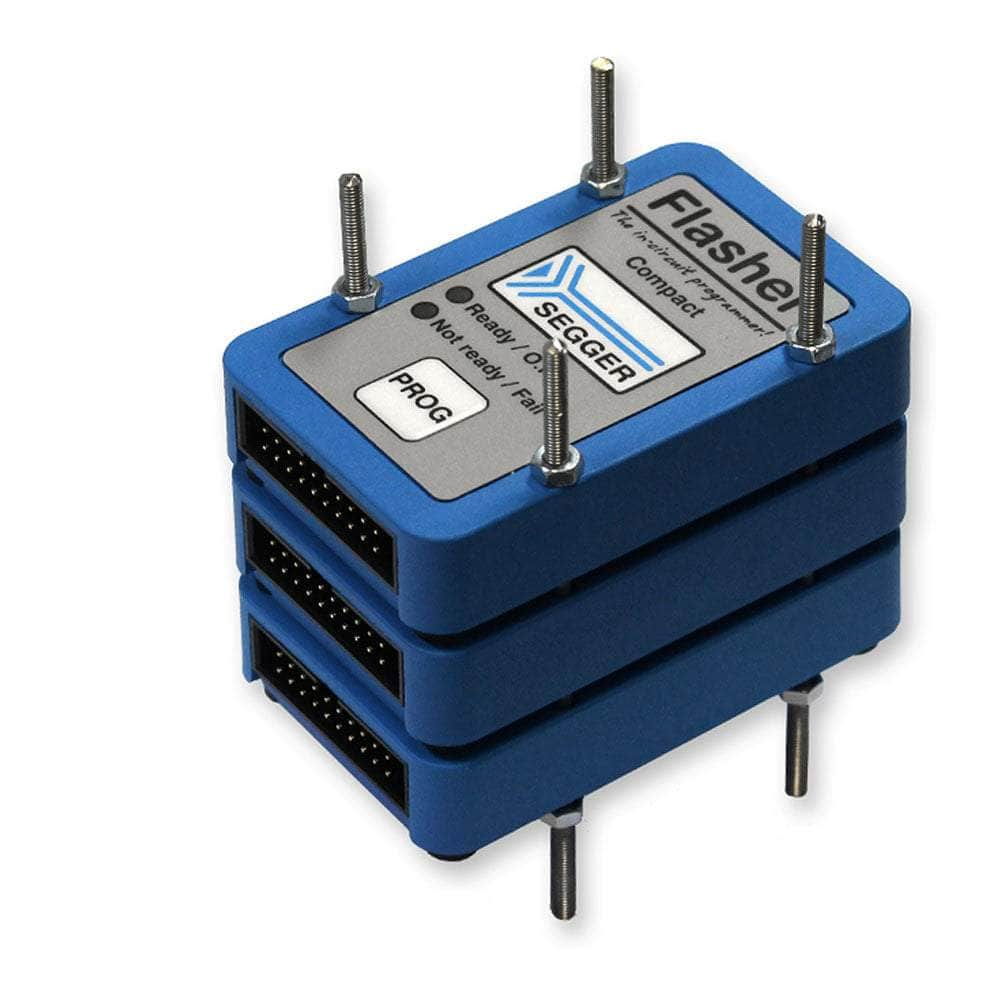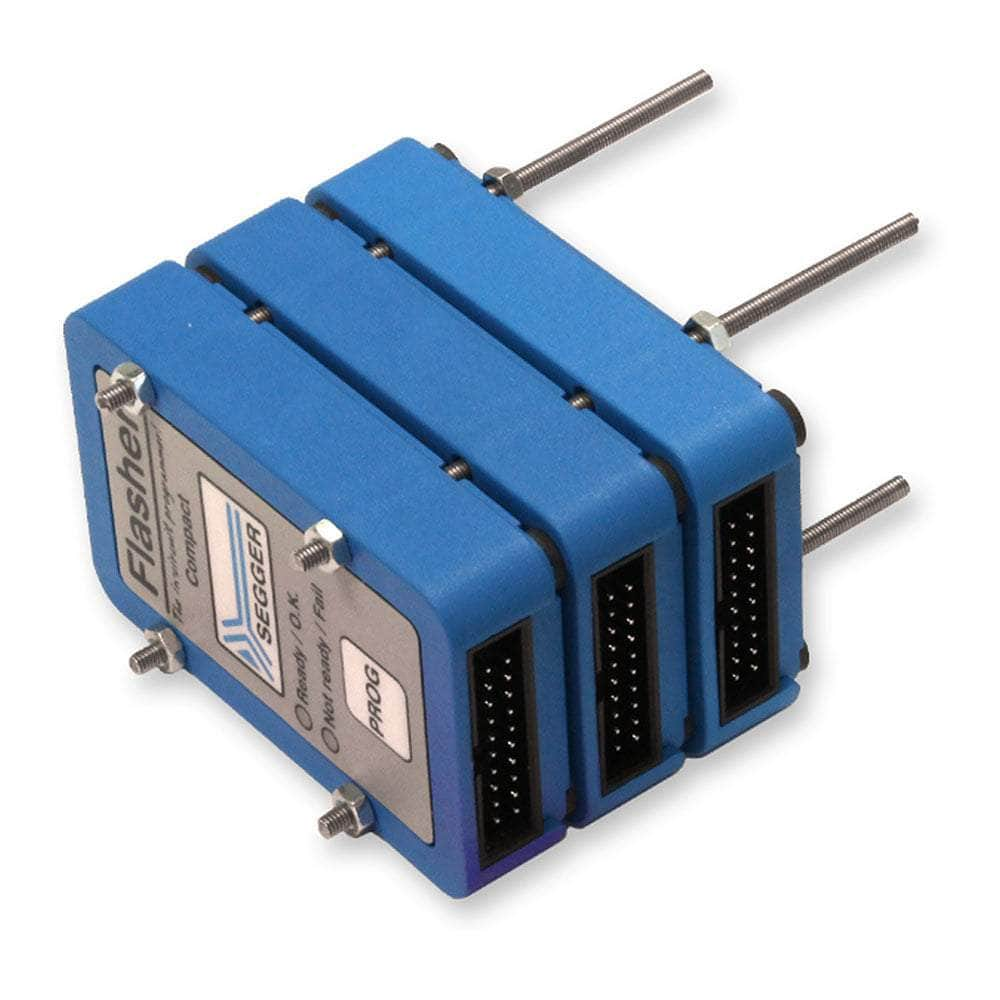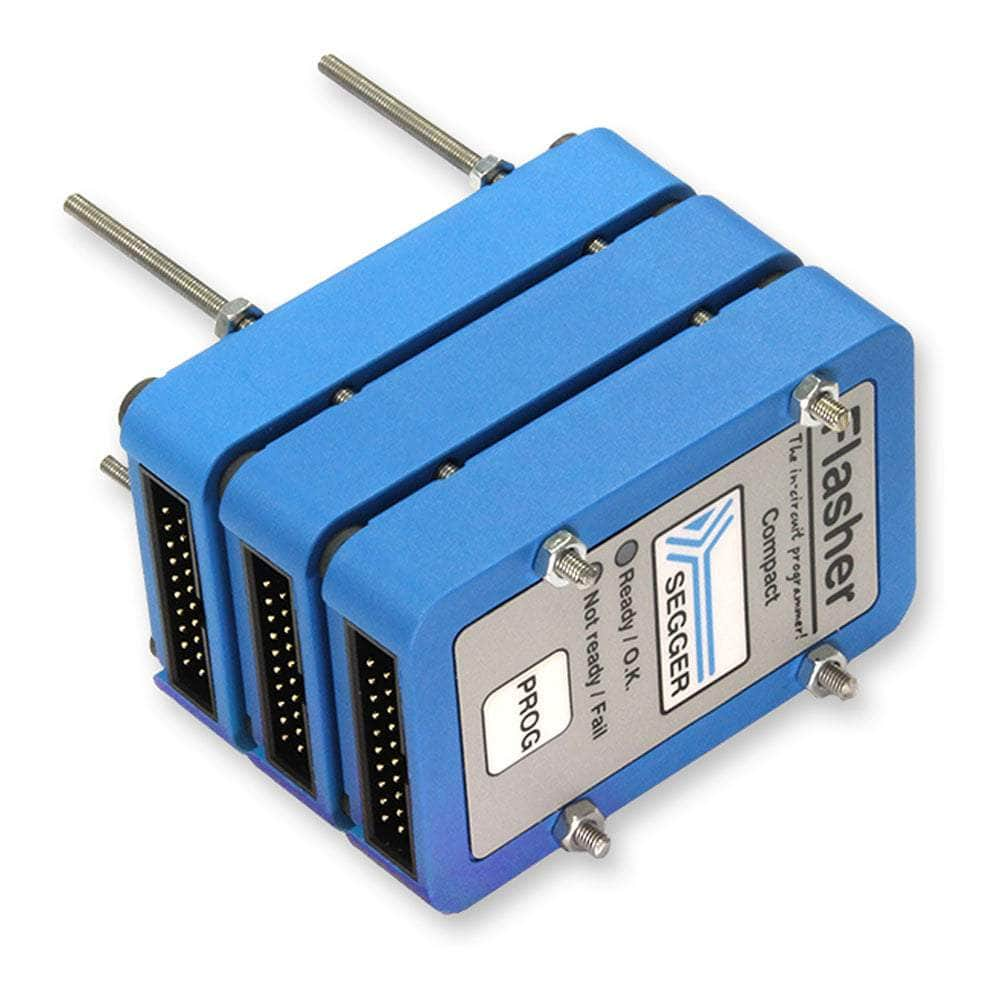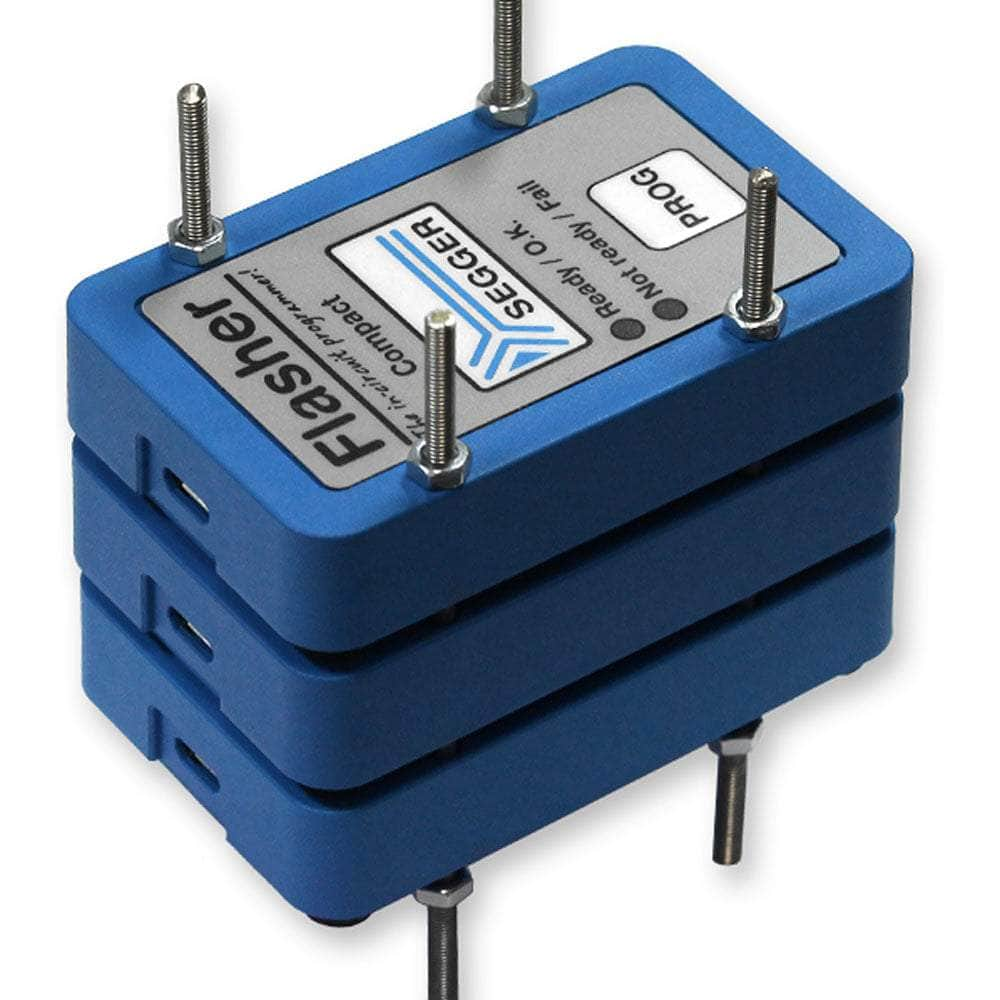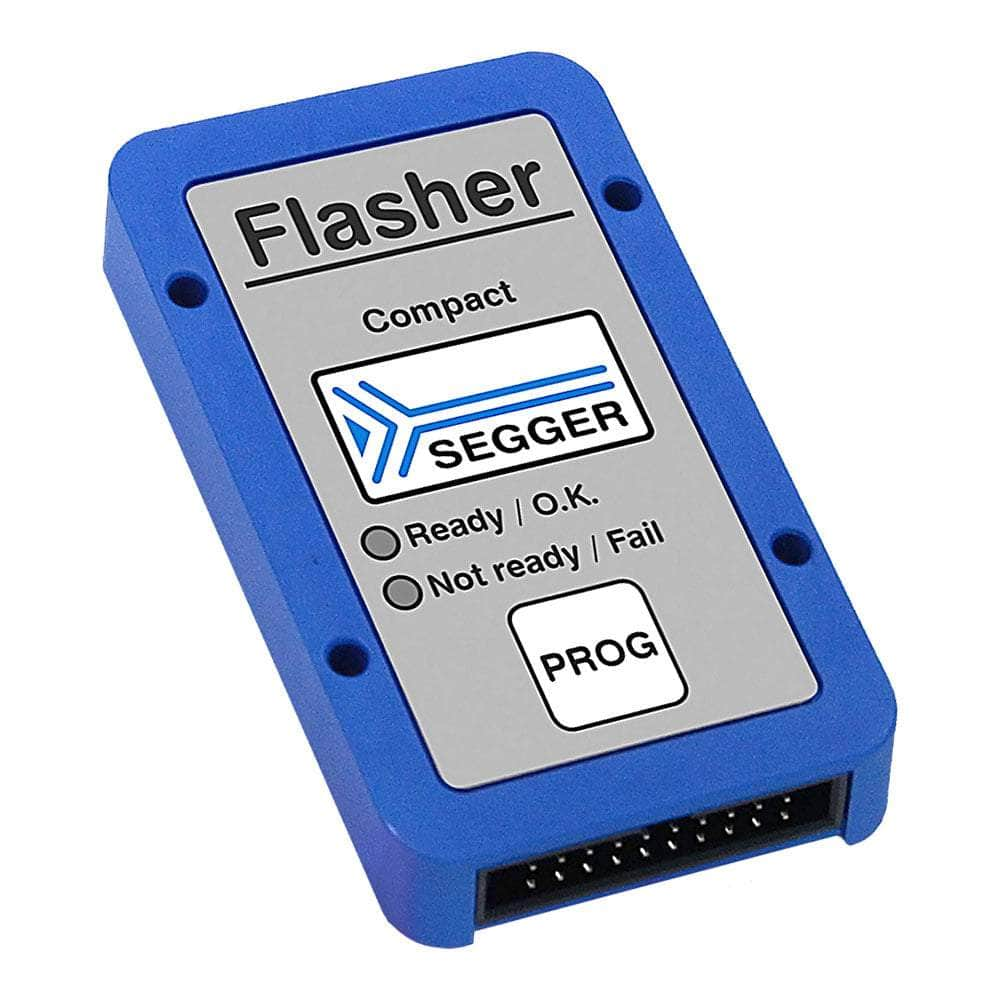
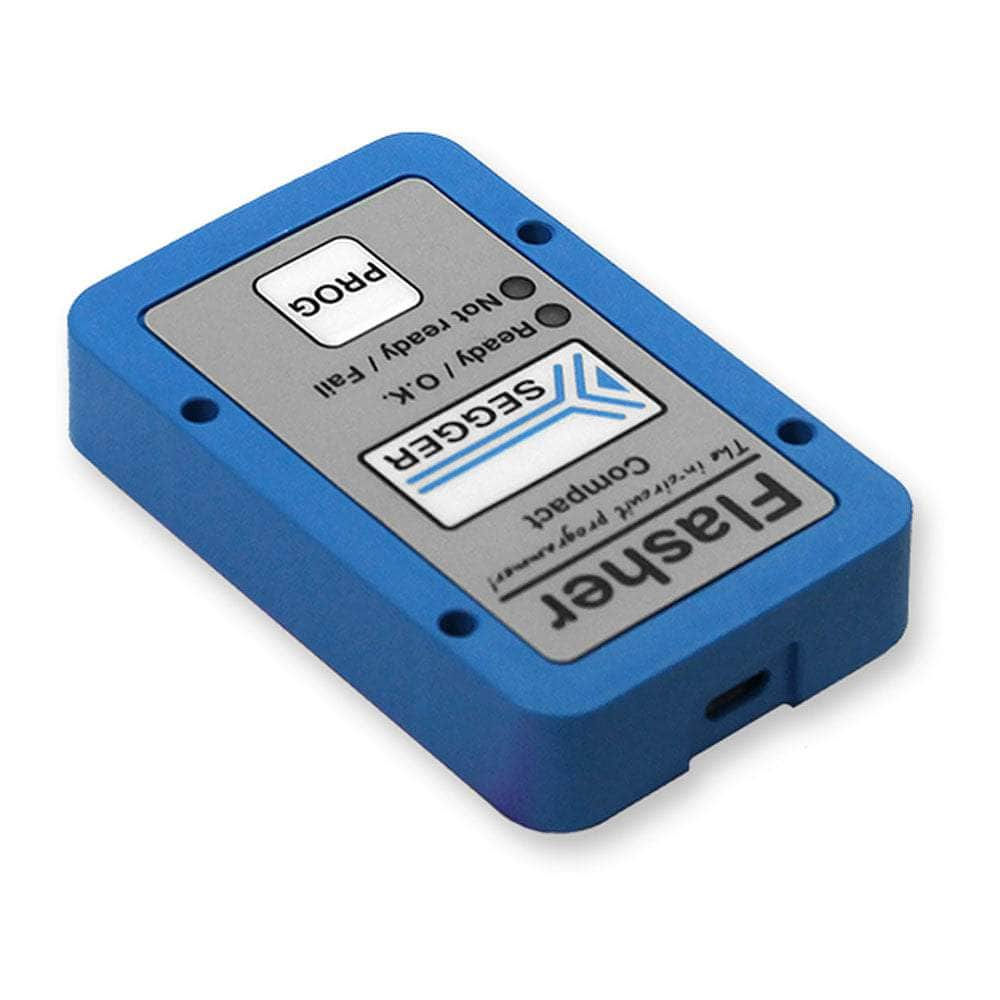

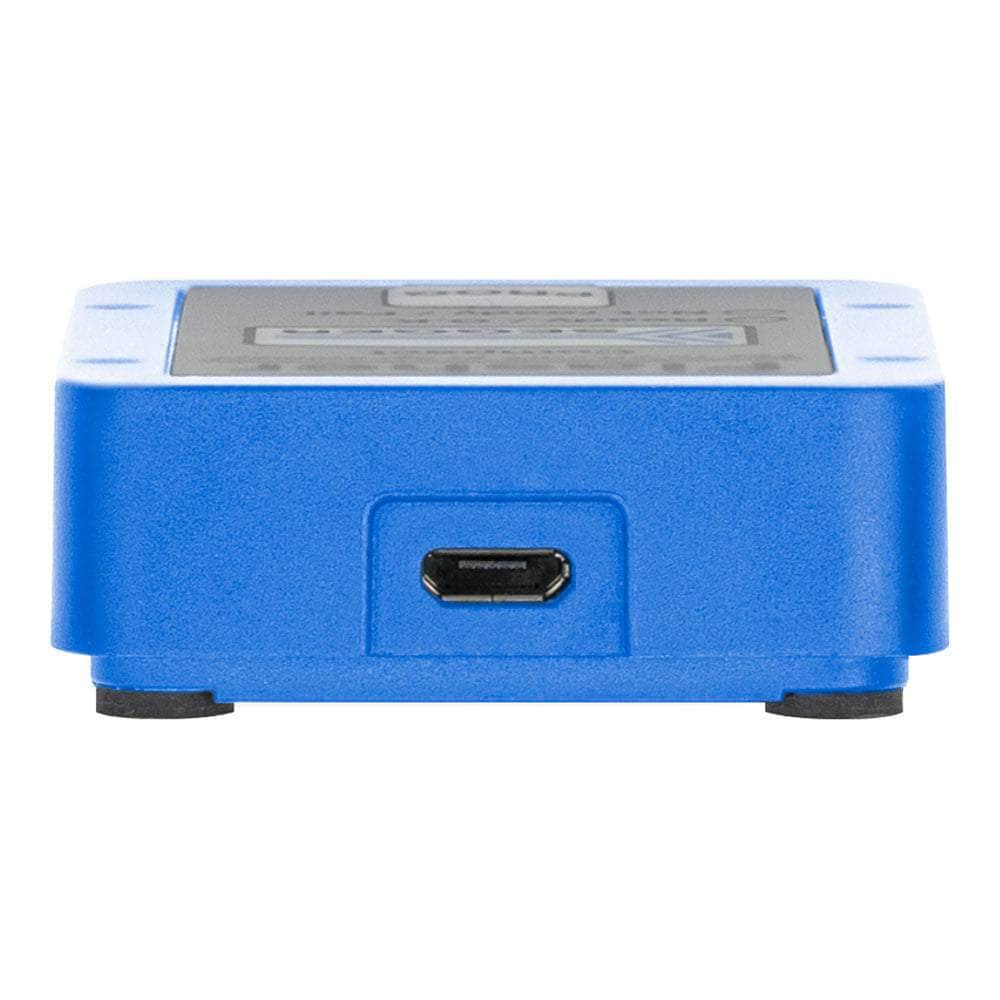
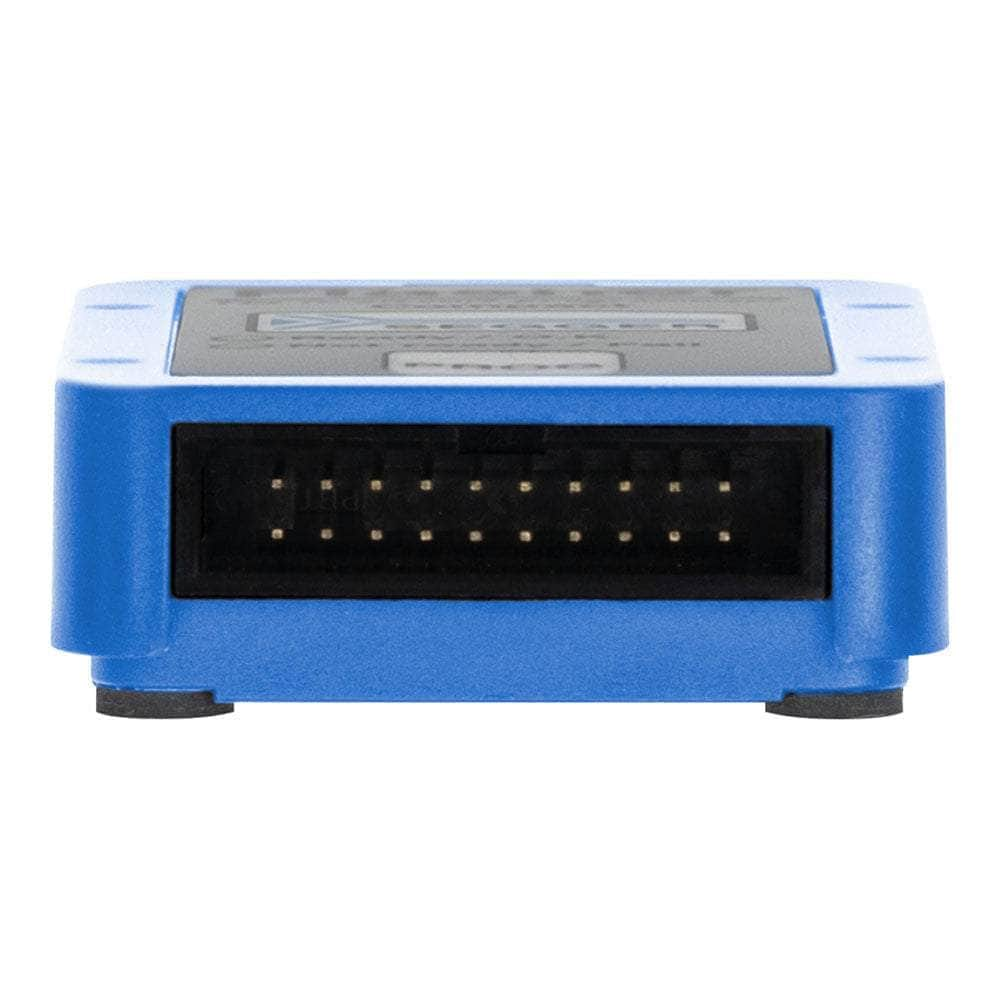

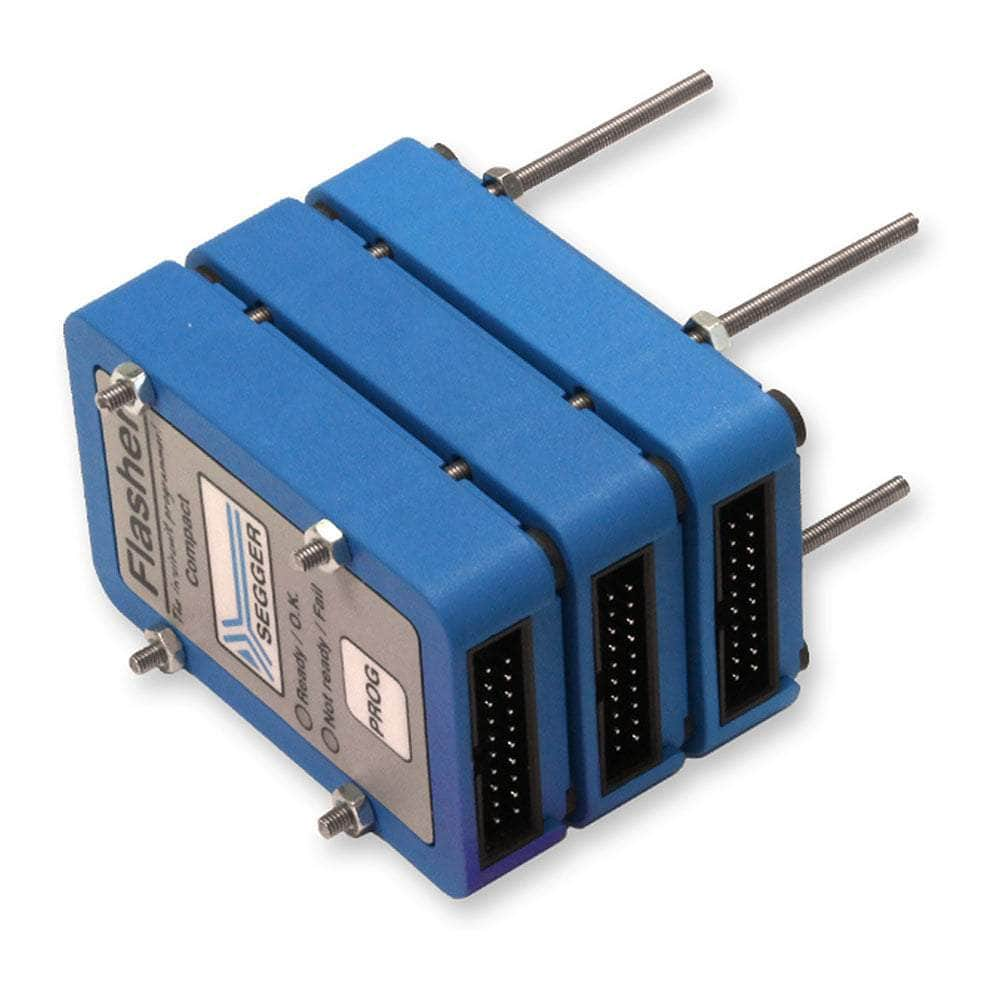
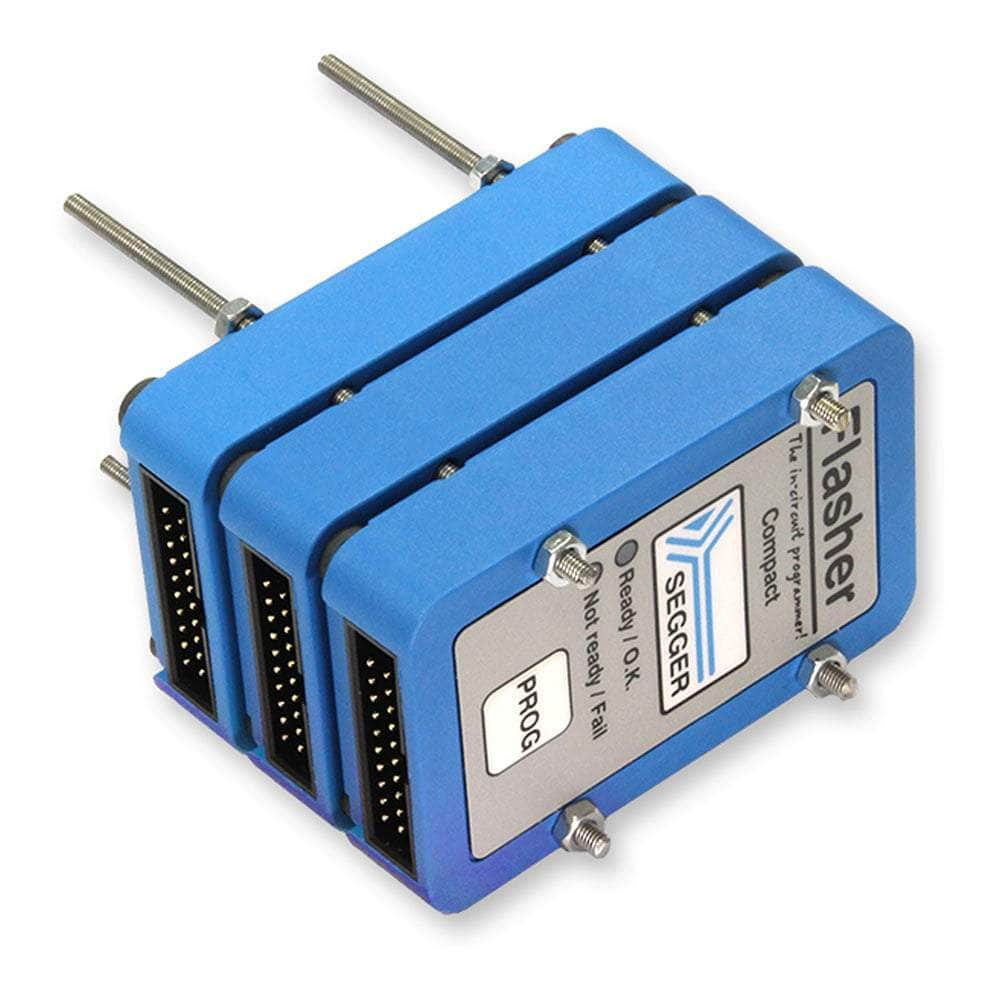
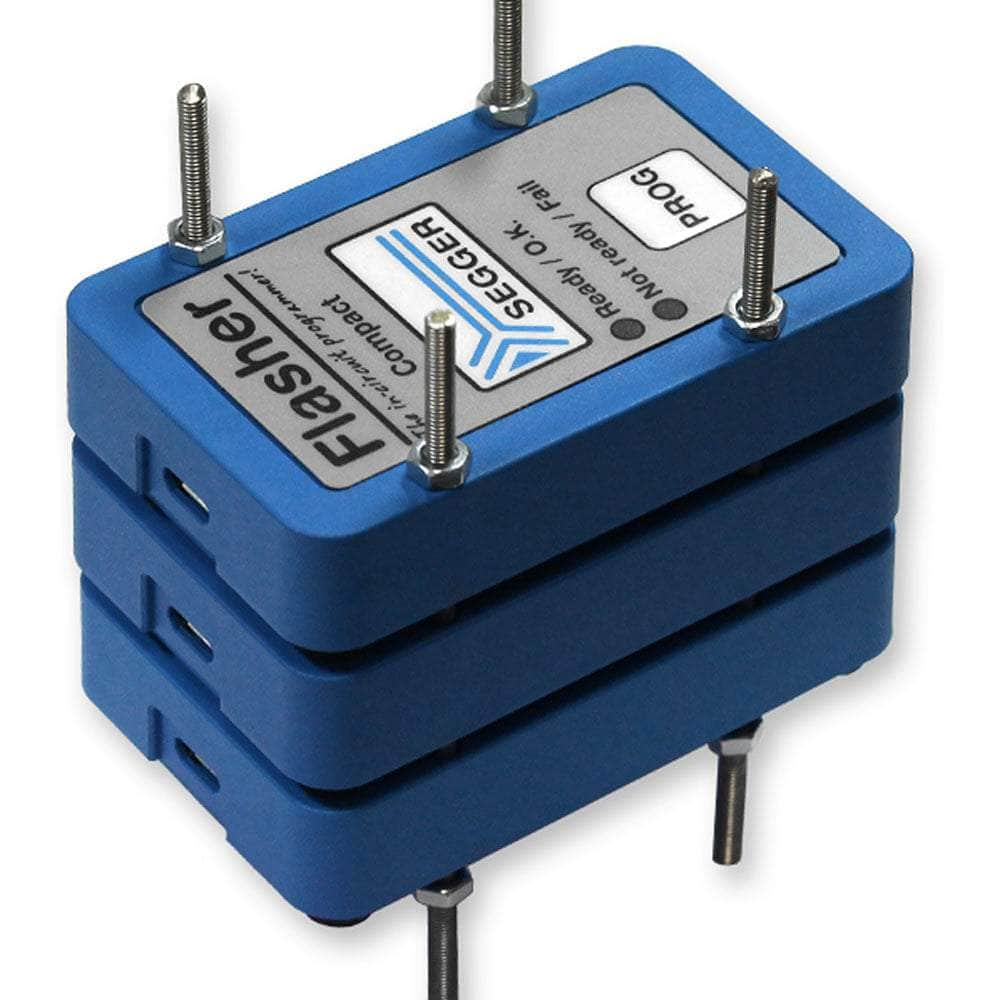
Key Features
Overview
The SEGGER Flasher Compact delivers professional-grade in-circuit flash programming in a space-efficient design ideal for production rigs and automated test equipment. This powerful programmer supports thousands of microcontrollers, SoCs, and external flash devices across all major architectures including ARM Cortex, RISC-V, AVR, PIC, and MSP430.
Operating in true stand-alone mode, the Flasher Compact eliminates PC dependencies once configured, storing up to 128MB of firmware images and programming configurations internally. The device programs internal MCU flash, external (Q)SPI memories, and parallel NOR flash devices with industry-leading speed and reliability.
Downloads
Why Engineers Choose The SEGGER Flasher Compact In-Circuit Programmer
Space-Constrained Production
Stand-Alone Reliability
Scalable Volume Production
Advanced Stand-Alone Flash Programming for Space-Constrained Production
The SEGGER Flasher Compact is a powerful universal in-circuit flash programmer designed specifically for integration into production rigs and automated test equipment (ATE) where space is at a premium. This compact programming solution delivers the same robust performance as the full-sized Flasher PRO in a credit card-sized form factor.
Key Programming Capabilities
| Flash Memory Types | Interface Support | Target Voltage Range |
|---|---|---|
| Internal MCU/SoC Flash | JTAG, SWD, UART, PDI | 1.2V to 5V |
| External (Q)SPI Flash | SPI, QSPI, C2, cJTAG | Up to 400mA supply |
| Parallel NOR Flash | ICSP, ISP, SWIM, UPDI | 50MHz max speed |
Stand-Alone Operation
Once configured using SEGGER's J-Flash software, the Flasher Compact operates completely independently without a PC connection. The device stores firmware images and programming configurations in its massive 128MB internal memory, enabling reliable production programming with just a button press.
Production Ready: No additional licences required. All supported devices are included with free firmware updates and flash loader additions for the device lifetime.
Gang Programming Expansion
For high-volume production, connect multiple Flasher Compact units to a Flasher Hub-12 or Flasher Hub-4 to create powerful gang programming systems supporting up to 24 parallel programming channels.
Wiring Quick-Start
The Flasher Compact uses a standard 20-pin IDC connector with 0.1" (2.54mm) pitch for target connections:
| Pin | Signal | Pin | Signal |
|---|---|---|---|
| 1 | VTref | 2 | NC |
| 3 | nTRST | 4 | GND |
| 5 | TDI | 6 | GND |
| 7 | TMS/SWDIO | 8 | GND |
| 9 | TCK/SWCLK | 10 | GND |
| 11 | RTCK | 12 | GND |
| 13 | TDO/SWO | 14 | GND |
| 15 | nRESET | 16 | GND |
| 17 | UART_TX | 18 | GND |
| 19 | 5V Supply | 20 | GND |
Note: Pin 1 (VTref) must be connected to target voltage for proper operation. The programmer senses this voltage to set appropriate logic levels.
Physical Integration
Measuring just 70mm × 45mm × 18mm and weighing only 40g, the Flasher Compact includes four mounting holes for secure installation in production equipment. The USB-C interface provides both power and data communication with a single cable.
| General Information | |
|---|---|
Part Number (SKU) |
5.19.00
|
Manufacturer |
|
| Physical and Mechanical | |
Weight |
0.5 kg
|
| Other | |
Warranty |
|
HS Code Customs Tariff code
|
|
EAN |
5055383699568
|
Frequently Asked Questions
Have a Question?
-
What is the difference between the Flasher and J-Link for programming devices?
The key difference is their intended use: J-Link is primarily a debug probe with programming capabilities, whilst Flasher is specifically designed for production programming. J-Link connects to your PC and IDE for interactive debugging, code stepping, and breakpoint setting during development. Flasher operates stand-alone once configured, storing firmware images internally for production programming without needing a PC connection. J-Link excels at development tasks with unlimited flash breakpoints and real-time debugging features, whilst Flasher is optimised for reliable, repeatable production programming in manufacturing environments.
-
Is the Flasher Compact suitable for field service applications?
While the Flasher Compact can be used for field service, SEGGER's Flasher Portable PLUS is specifically designed for portable field updates with integrated battery power. The Flasher Compact is optimised for fixed production and ATE installations where space efficiency is critical.
-
What development environments support the Flasher Compact?
The Flasher Compact works with any development environment that supports J-Link interfaces, including IAR Embedded Workbench, Keil MDK, Eclipse-based IDEs, and SEGGER Embedded Studio. It can also be controlled via command-line tools for automated production workflows.
-
How does the Flasher Compact differ from the Flasher PRO?
The Flasher Compact offers the same programming capabilities as the Flasher PRO in a smaller form factor designed for production integration. Key differences include the compact size with mounting holes, USB-C interface, and lack of built-in Ethernet connectivity.
-
What power supply does the Flasher Compact require?
The Flasher Compact is powered entirely through its USB-C connection, drawing maximum 130mA. No external power supply is needed. The unit can also provide up to 400mA at 5V to power target devices during programming.
-
Can I program external SPI flash memories directly?
Yes, the Flasher Compact programs external SPI and QSPI flash memories either through the connected microcontroller or by direct connection to the memory chip. This supports applications requiring separate boot flash programming or firmware storage in external memory.
-
Does the Flasher Compact include software and device support?
Yes, the Flasher Compact includes J-Flash programming software for Windows, Linux, and macOS, plus lifetime free firmware updates and new device support. No additional licences are required for any supported devices, including future additions.
-
What is the programming speed compared to other solutions?
The Flasher Compact achieves near-theoretical maximum programming speeds using SEGGER's optimised flash algorithms. JTAG/SWD interfaces operate up to 50MHz, with actual programming speeds dependent on target device capabilities and memory size.
-
How do I set up gang programming with multiple Flasher Compact units?
Connect up to 4 Flasher Compact units directly to a Flasher Hub-4, or up to 24 units to a Flasher Hub-12 using USB-C connections. Each programmer operates independently with its own firmware image, enabling parallel programming of identical or different target devices simultaneously.
-
Can the Flasher Compact operate without a computer connection?
Yes, the Flasher Compact operates in true stand-alone mode once configured. After initial setup using J-Flash software, it stores firmware images and programming configurations in its 128MB internal memory. Programming is initiated by pressing the PROG button or via external trigger signals.
-
What microcontrollers does the SEGGER Flasher Compact support?
Microchip AVR/PIC, Texas Instruments MSP430, Renesas RX/RL78, STM8, SiLabs 8051, and NXP/PowerPC architectures. A complete device list is available on SEGGER's website, with new devices added regularly at no extra cost.




